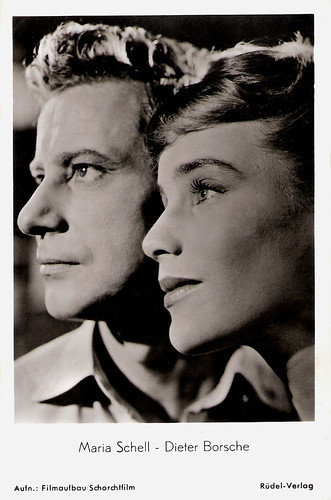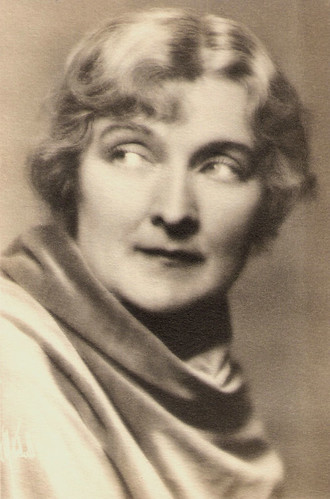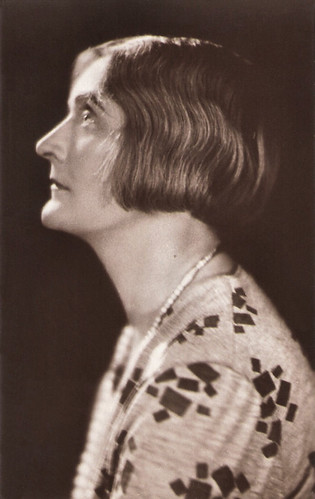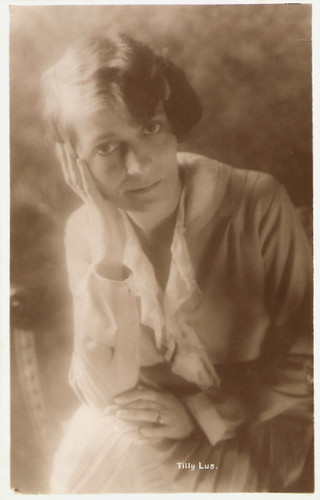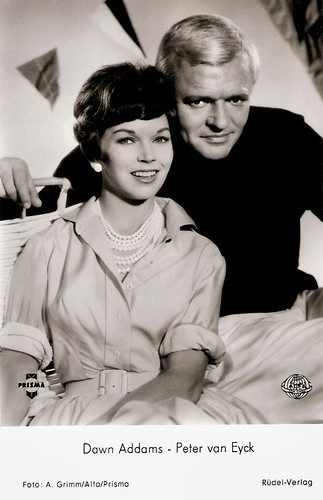French actress and singer Gina Palerme was the toast of the London music halls in the 1910s. In the next decade she played in numerous French silent films, and finished her career in the Moulin Rouge and other Paris cabarets.
![Gina Palerme and Roy Royston in Bric-a-brac]()
British postcard by J. Beagles & Co, London, no. 240 C. Photo: Rita Martin. Publicity still for the stage production Bric-a-brac (1915) with Roy Royston.
![Gina Palerme, Roy Royston]()
British postcard by J. Beagles & Co, London, no. 240 E. Photo: Rita Martin. Publicity still for the stage production Bric-a-brac (1915) again with Roy Royston.
Gina Palerme was discovered by a British entrepreneur. She debuted as Toinette in the musical comedy The Quaker Girl (Lionel Mockton, 1911) at the Adelphi Theatre.
Her début was followed by appearances in West-end productions like The Dancing Mistress (1912), Betty (1914), Platons Les Capucines (1914), Bric-a-Brac (1915), Vanity Fair (1916), La Petite Chocolatière (1917), Finsbury (1917), and The Girl for the Boy (1919).
Until 1919 Palerme was the toast of the London music hall. Cecil Beaton enthusiastically wrote about her: “Gina Palerme brought the glamour of the French cocotte to London. Her off-stage appearances were as sensational as her stage escapades...sometimes she wore a velvet tam-o'-shanter and men's riding breeches while relaxing in the richly ornate gilt of her Maida Vale drawing-room.”
The National Portrait Gallery holds beautiful photos from those years, made by the famous photographer Bassano and by his colleagues Rita Martin and The Dover Street Studios Ltd .
![Gina Palerme]()
British postcard, no. 10273 E. Photo: The Dover Street Studios Ltd, London.
![Gina Palerme]()
British postcard. Photo: Wrather & Buys, London.
![Gina Palerme]()
British postcard in the Arcadian Series, no. A 39. Photo: Dover Street Studios.
Gina Palerme returned to France in 1919.
In the early 1920s she played in various silent French films like L’éternel féminin/The Eternal Female (Roger Lion, 1921), Margot (Guy du Fresnay, 1922), L’idée de Françoise/Françoise's Idea (Robert Saidreau, 1923) in which she played the title role of the foreseeing Françoise, and the Halevy & Meilhac adaptation Frou-Frou (Guy du Fresnay, 1923).
La bataille/The Battle (1923) was co-directed by Edouard-Emile Viollet and Hollywood star Sessue Hayakawa who also played the male lead, together with his wife Tsuru Aoki.
Palerme also appeared with Hayakawa and Aoki in the American version of La bataille, The Danger Line (1924).
In the horror comedy Au secours!/Help! (Abel Gance, 1924) she co-starred with the great comic Max Linder. It was his last surviving work;
Her final film was La clé de voute/The Keystone (Roger Lion, 1925), which Palerme produced herself. It was a drama about a young female factory worker who gives away her child, but always repents.
After this film Gina Palerme quitted the cinema. From then on, she would only work in such French cabarets as the Moulin Rouge and the Concert Mayol.
More information about Palerme was not to be found on the net.
![Gina Palerme]()
British postcard. Photo: Rita Martin.
![Gina Palerme]()
French postcard by A.N., Paris, no. 57.
![Gina Palerme]()
French postcard by Cinémagazine, no. 94.
Sources: John Culme (Footlight Notes), National Portrait Gallery, and IMDb.

British postcard by J. Beagles & Co, London, no. 240 C. Photo: Rita Martin. Publicity still for the stage production Bric-a-brac (1915) with Roy Royston.

British postcard by J. Beagles & Co, London, no. 240 E. Photo: Rita Martin. Publicity still for the stage production Bric-a-brac (1915) again with Roy Royston.
The Glamour of the French Cocotte
Gina Palerme was discovered by a British entrepreneur. She debuted as Toinette in the musical comedy The Quaker Girl (Lionel Mockton, 1911) at the Adelphi Theatre.
Her début was followed by appearances in West-end productions like The Dancing Mistress (1912), Betty (1914), Platons Les Capucines (1914), Bric-a-Brac (1915), Vanity Fair (1916), La Petite Chocolatière (1917), Finsbury (1917), and The Girl for the Boy (1919).
Until 1919 Palerme was the toast of the London music hall. Cecil Beaton enthusiastically wrote about her: “Gina Palerme brought the glamour of the French cocotte to London. Her off-stage appearances were as sensational as her stage escapades...sometimes she wore a velvet tam-o'-shanter and men's riding breeches while relaxing in the richly ornate gilt of her Maida Vale drawing-room.”
The National Portrait Gallery holds beautiful photos from those years, made by the famous photographer Bassano and by his colleagues Rita Martin and The Dover Street Studios Ltd .

British postcard, no. 10273 E. Photo: The Dover Street Studios Ltd, London.

British postcard. Photo: Wrather & Buys, London.

British postcard in the Arcadian Series, no. A 39. Photo: Dover Street Studios.
Horror Comedy
Gina Palerme returned to France in 1919.
In the early 1920s she played in various silent French films like L’éternel féminin/The Eternal Female (Roger Lion, 1921), Margot (Guy du Fresnay, 1922), L’idée de Françoise/Françoise's Idea (Robert Saidreau, 1923) in which she played the title role of the foreseeing Françoise, and the Halevy & Meilhac adaptation Frou-Frou (Guy du Fresnay, 1923).
La bataille/The Battle (1923) was co-directed by Edouard-Emile Viollet and Hollywood star Sessue Hayakawa who also played the male lead, together with his wife Tsuru Aoki.
Palerme also appeared with Hayakawa and Aoki in the American version of La bataille, The Danger Line (1924).
In the horror comedy Au secours!/Help! (Abel Gance, 1924) she co-starred with the great comic Max Linder. It was his last surviving work;
Her final film was La clé de voute/The Keystone (Roger Lion, 1925), which Palerme produced herself. It was a drama about a young female factory worker who gives away her child, but always repents.
After this film Gina Palerme quitted the cinema. From then on, she would only work in such French cabarets as the Moulin Rouge and the Concert Mayol.
More information about Palerme was not to be found on the net.

British postcard. Photo: Rita Martin.

French postcard by A.N., Paris, no. 57.

French postcard by Cinémagazine, no. 94.
Sources: John Culme (Footlight Notes), National Portrait Gallery, and IMDb.














